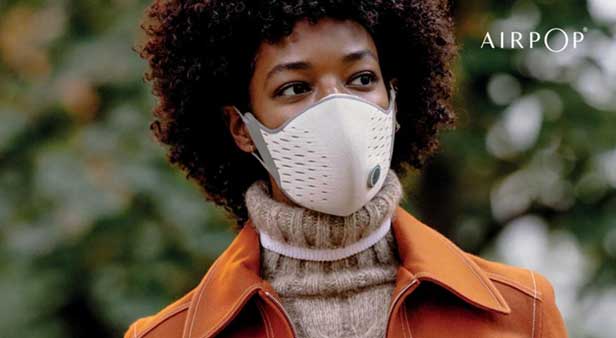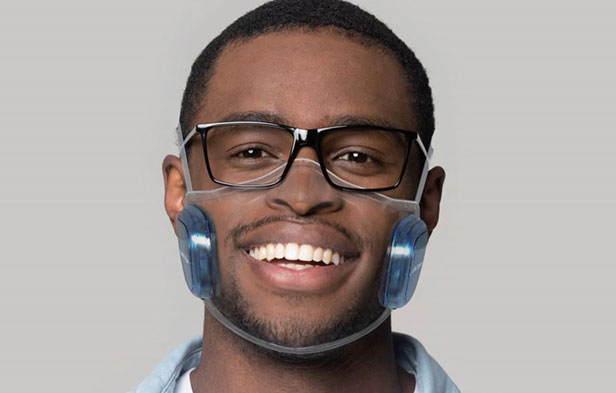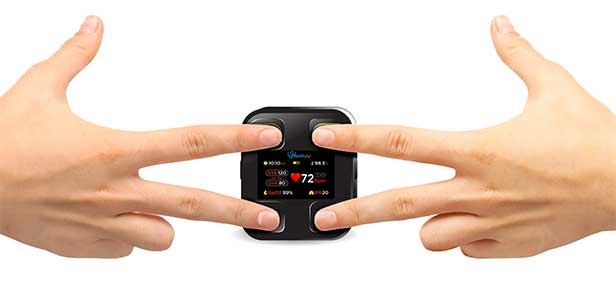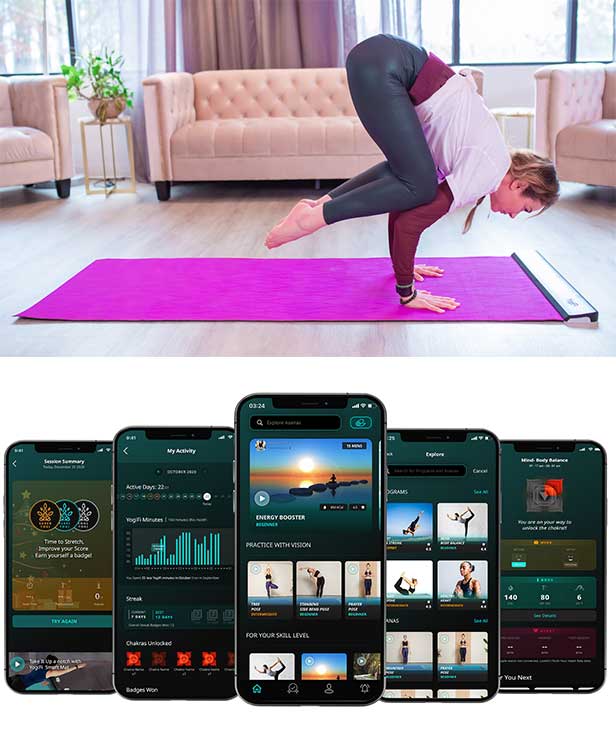Product Hub January 15, 2021
Highlights From CES 2021
Smart masks, sanitizing robots and connected fitness gear were among the tech trends at this year’s virtual show.
CES, the massive tech trade show that traditionally takes over Las Vegas every January, launched a pandemic-necessitated all-virtual edition this week, Jan. 11 to Jan. 14. The digital expo has been a more intimate affair than the sprawling shows of years past: There are 1,800 exhibitors on the online platform, as opposed to the 4,400 who staked out hundreds of thousands of square feet last year. Attendance of the show remains fairly high – with 150,000 signed up, as opposed to the 170,000 who made the trek to Vegas last year.
As might be expected, many of the trending gadgets at this year’s show related to the coronavirus pandemic, whether in the form of UV-sanitizing robots, digital health screening wearables, smart face masks or next-level videoconferencing tech.
CTA, the group behind CES, forecasts robust growth for the retail tech sector in 2021, predicting a year-over-year increase of 4.3%, with sales reaching $461 billion in the U.S. this year. That reflects how Americans have relied heavily on technology to stay entertained, connected and healthy from home in the past year, according to Gary Shapiro, president and CEO of CTA.
“The pandemic has pushed the fast-forward button on tech adoption – from our homes to our work to our doctors’ offices,” he said. “While the road to a full economic recovery is long and intertwined with a complex vaccine rollout, the tech industry’s ability to meet the moment during this crisis has been critical.”
Here’s a roundup of some of the more interesting trends at this year’s CES.
Smart Masks

The Active+ Smart Mask with Halo sensor from AirPop
Several companies exhibiting this year showcased smart masks. AirPop, for example, offered an app-enabled smart mask that tracks the wearer’s breathing behavior, breathing cycles and even the pollutants blocked by the mask. In active mode, the mask’s Halo sensor measures metrics like breaths-per-minute and breaths-per-pace, helping people track their workouts. The mask’s sensor can also keep track of when it’s time to replace its snap-in filter. The filters, which come with unique QR codes that can be scanned by the AirPop app when installed, block more than 99% of dust, allergens and microbial particles.
“This product embodies the AirPop mission – to help people better understand and take control of their respiratory health through a human-centered approach to design, science and technology,” said Chris Hosmer, AirPop founder. He founded the company in 2015 after his daughter suffered a series of acute respiratory reactions from polluted air.

The Nexvoo Breeze is a clear N99 mask that incorporates UV-light disinfection and three-speed micro-fans.
Nexvoo Inc. went a slightly different route with its smart mask offering. The Breeze is a clear N99 mask that incorporates UV-light disinfection and three-speed micro-fans to save wearers from too much hot air.
AccYouRate, an Italian company, collaborated with the Red Cross for its smart YOUSAFE mask, which includes a sensor display on the outside of the mask that measures the wearer’s temperature and detects air quality. The sensor lights up if the wearer has a fever or if certain preset air quality measures are exceeded.
Digital Health and Therapeutics

The HealthyU is an all-in-one patient monitor to assist with telemedicine, measuring everything from blood pressure to pulse oximetry.
Another big trend this year was digital health, with wearable tech and various other gadgets able to help with remote monitoring and diagnostics. “The global pandemic has accelerated technology innovation,” said Lesley Rohrbaugh, CTA’s research director. The digital health sector is expected to continue its growth pattern in 2021 as well. In fact, the CTA estimates that this year the market for connected health monitoring devices in the U.S. will grow by 34% to reach $845 million.
The BioButton, from BioIntelliSense bills itself as a “medical grade COVID-19 screening solution.” The coin-sized button has an adhesive back and is meant to attach discreetly onto a person’s chest. It has a battery life of 90 days. The device sends private and secure daily vital sign reports and alerts of COVID-like symptoms to the companion app, according to BioIntelliSense.
When the vital signs are combined with the results of daily screening surveys on the app, the BioButton can use an algorithm to generate a “Cleared” or “Not Cleared” status prior to entry at work, school, an event or travel.
HD Medical unveiled the HealthyU, an all-in-one remote patient monitor that acts as a wireless electrocardiogram, as well measuring heart sounds, lung sounds, heart rate, pulse oximetry, temperature, respiratory rate and blood pressure.
“2020 has put greater emphasis on the need to advance remote patient monitoring technology, which is why we have prioritized bringing integrated sensors and intelligent insights into the home that make it easy for patients to use and viable for providers to leverage during care,” said Arvind Thiagarajan, founder and CEO of HD Medical.
Robot Takeover
Another big trend out of CES is “robots to the rescue,” as Rohrbaugh puts it. During the pandemic, the rush for contactless delivery and touchless interactions has helped raise the general public’s comfort with the idea of robots. Rohrbaugh noted that robots are being used for various purposes: triage in hospitals, delivering goods to doorsteps and stocking shelves. Hygiene robots are being developed to sanitize warehouses and stores.
There are even robot chefs. British company Moley Robotics debuted a robot that cooks from scratch and even cleans up afterward. Chefs including BBC “Master Chef” winner Tim Anderson played an integral role in developing the robotic kitchen – his cooking techniques were 3-D recorded, then translated into the robotic arms’ digital movements. The Moley kitchen has a digital menu of over 5,000 recipes, or users can add their own family favorites with a recipe-creation tool.
“It’s not just a labor-saving device,” said Mark Oleynik, founder and CEO of Moley Robotics. “It’s a platform for our creativity. It can even teach us how to become better cooks.”
At-Home Fitness

Yogifi is a smart yoga mat that pairs with a personalized instruction app.
During the pandemic, home fitness got a big boost, with many people investing in equipment and subscription services. So, naturally, that trend was reflected in many of the products and apps at CES this year.
Wondercise is a fitness training system that uses wristbands and leg straps to help ensure accuracy during workouts in addition to tracking metrics like heart rate. Its multipoint sensors help exercisers make sure they’re mirroring their trainer’s movements whether the instructor is in the room, or on a screen.
Yogifi is a smart yoga mat that pairs with an app. The mat has a sensor layer and, along with the app, provides guided instruction and real-time correction on your form during workouts.

Product Hub
Find the latest in quality products, must-know trends and fresh ideas for upcoming end-buyer campaigns.
